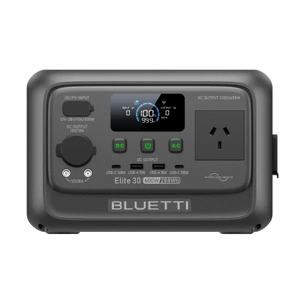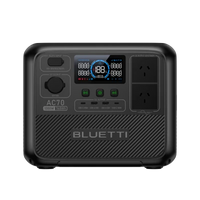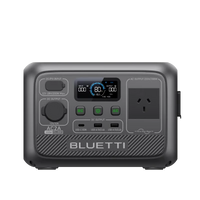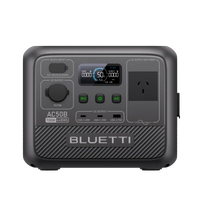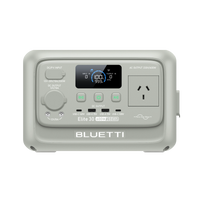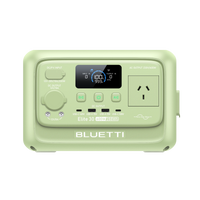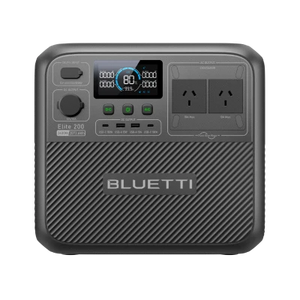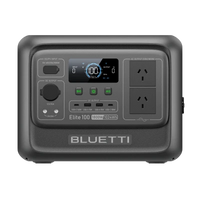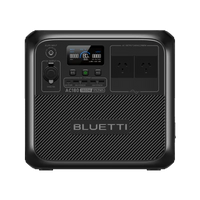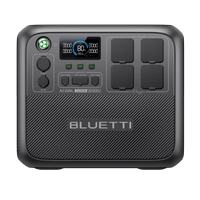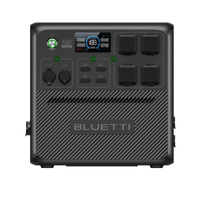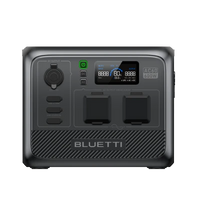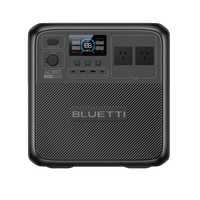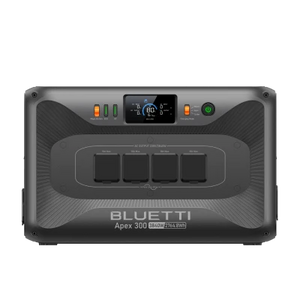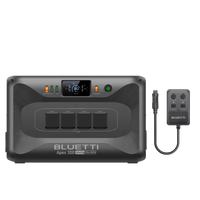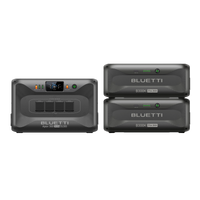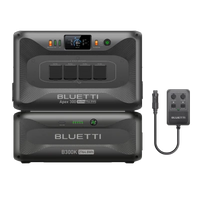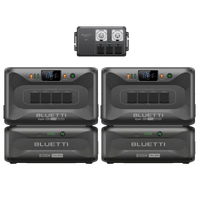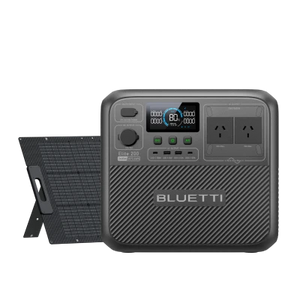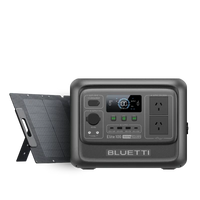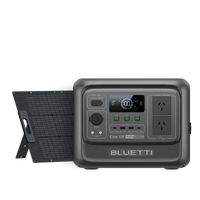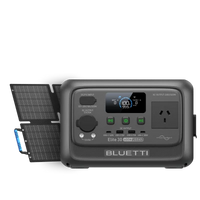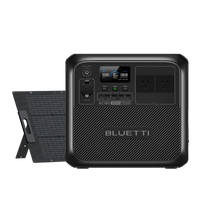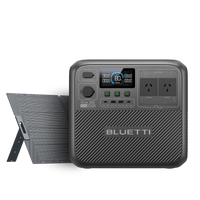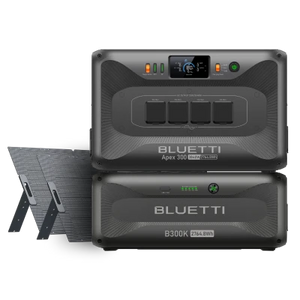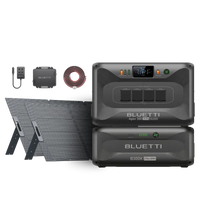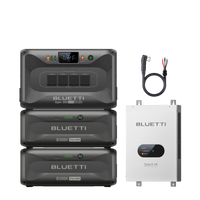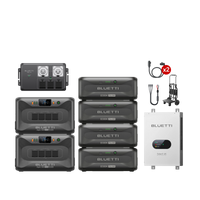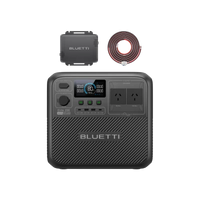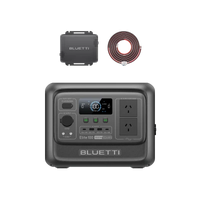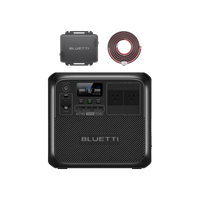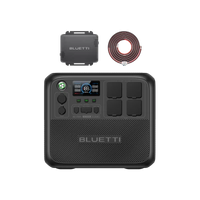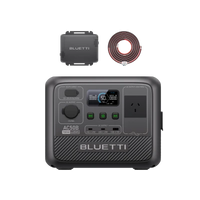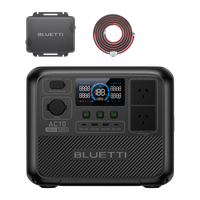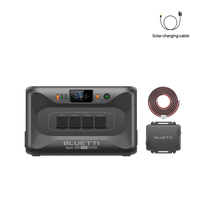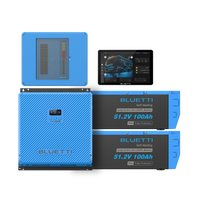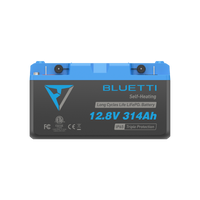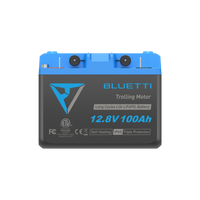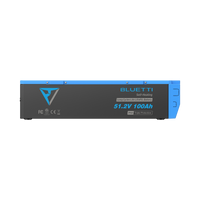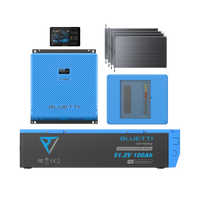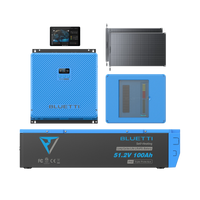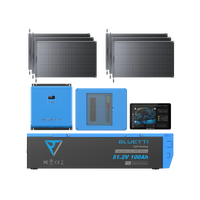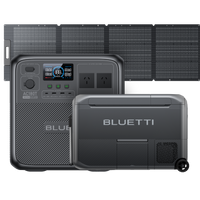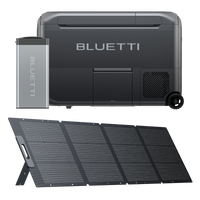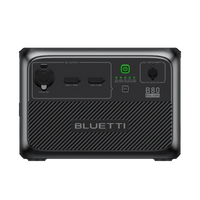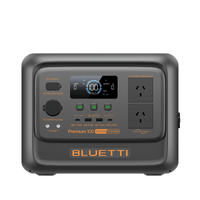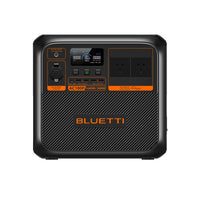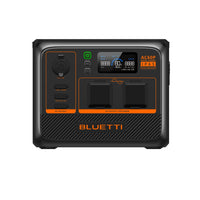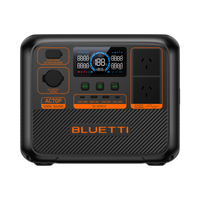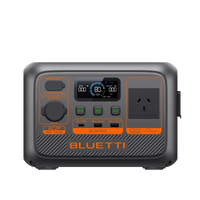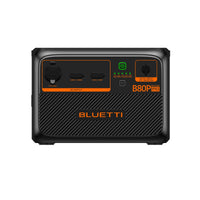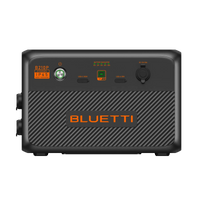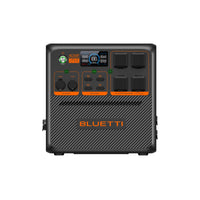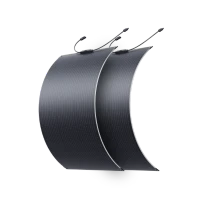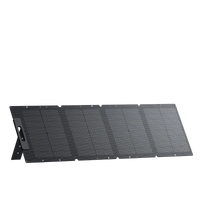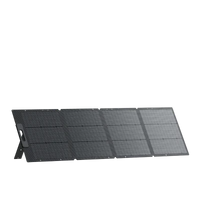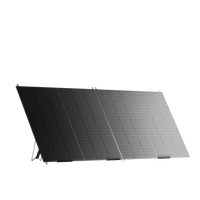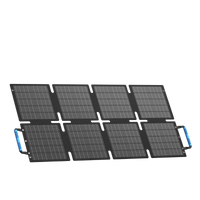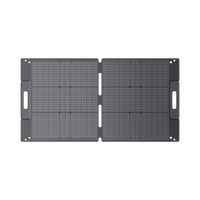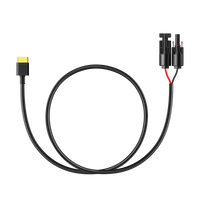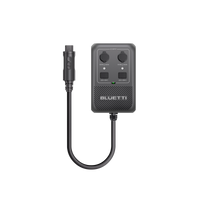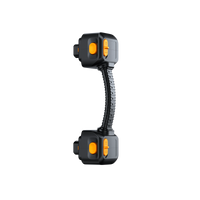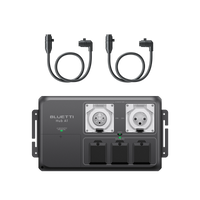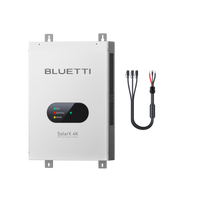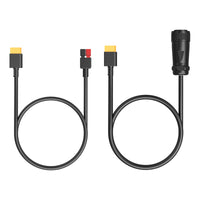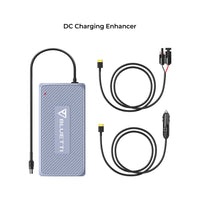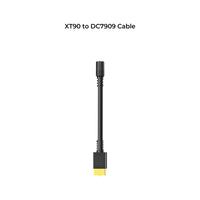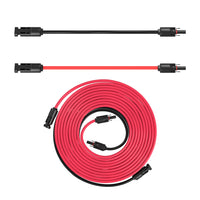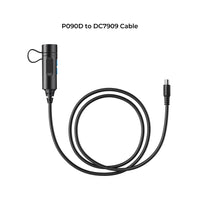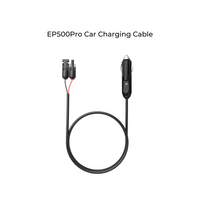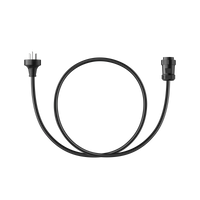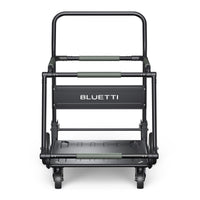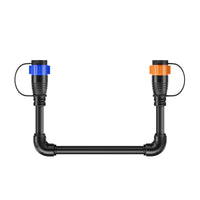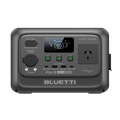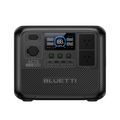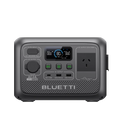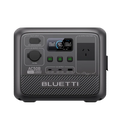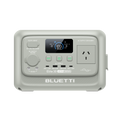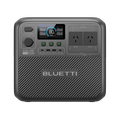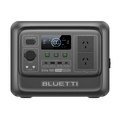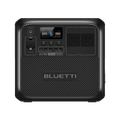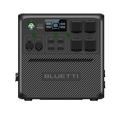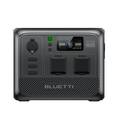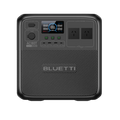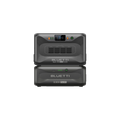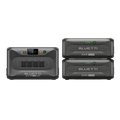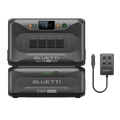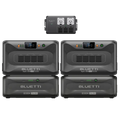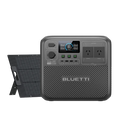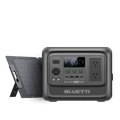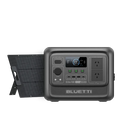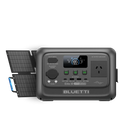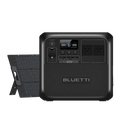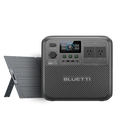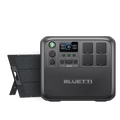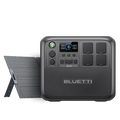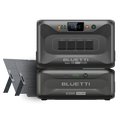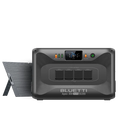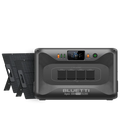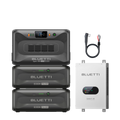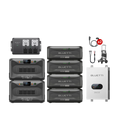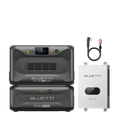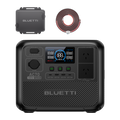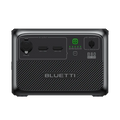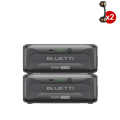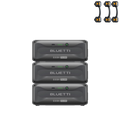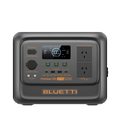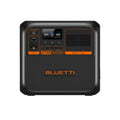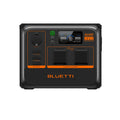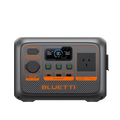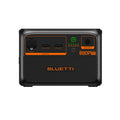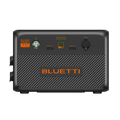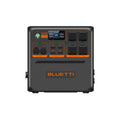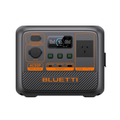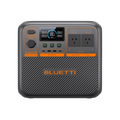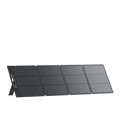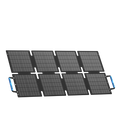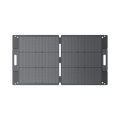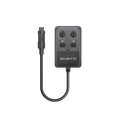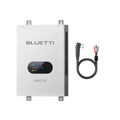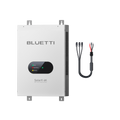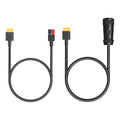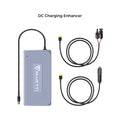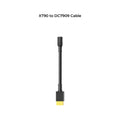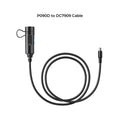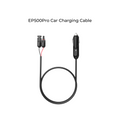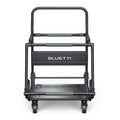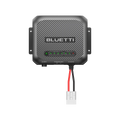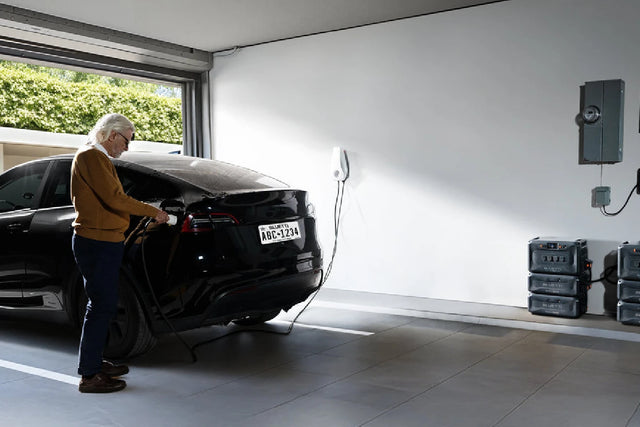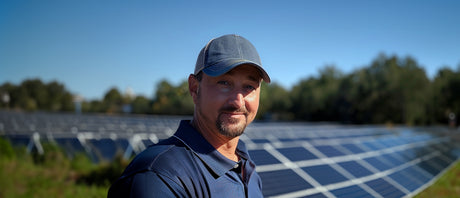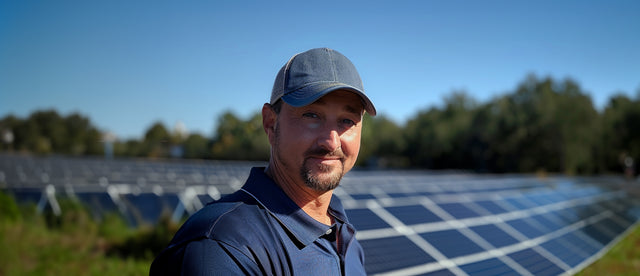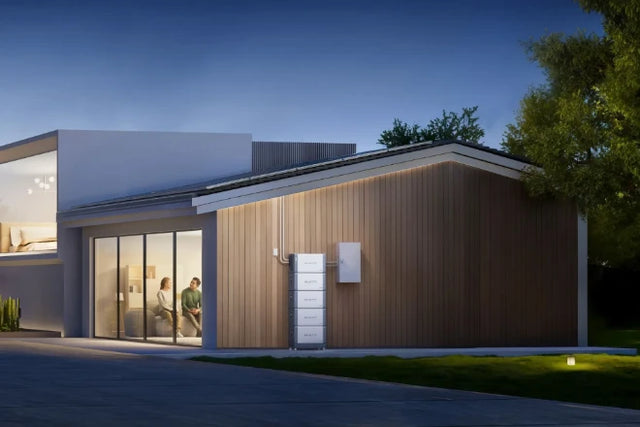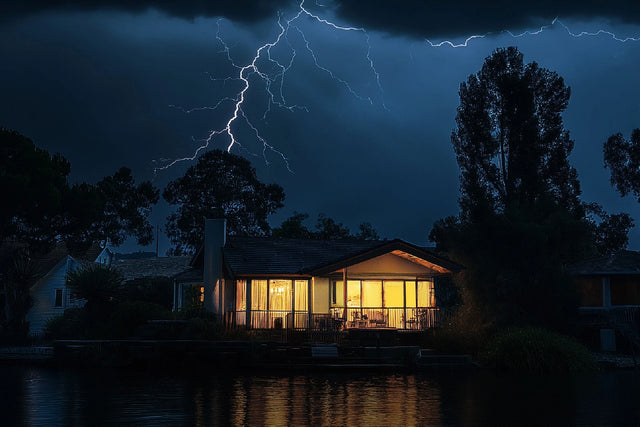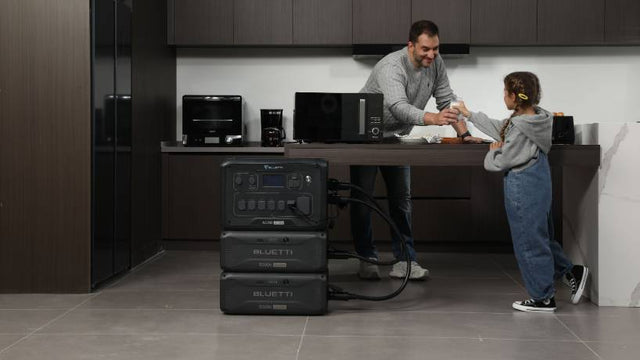As energy costs continue to rise in Australia, it has become increasingly important for consumers to find the cheapest electricity plans and energy providers. With so many different options on the market, it can be overwhelming and time-consuming to compare tariffs and find the best deal. That's why we've compiled this guide to help you navigate the complex world of electricity prices and take control of your energy bills. In this article, we will walk you through the process of comparing electricity tariffs to find the most cost-effective plan for your household, and provide tips on how to choose the right energy supplier for your needs. By the end, you will have the knowledge and tools necessary to make an informed decision on your electricity plan and potentially save hundreds of dollars each year. So read on and let's take a closer look at how you can find the cheapest energy plans and energy supplier in Australia.
Why is Australia electricity so high?
Australia has some of the highest electricity prices in the world, with households paying an average of 22.54 cents per kilowatt hour (kWh) as of 2021. This is significantly higher than the average prices in countries such as the United States (13.31 cents per kWh) and the United Kingdom (15.30 cents per kWh).There are several factors that contribute to the high cost of electricity in Australia. Firstly, Australia has an aging energy infrastructure, which requires significant investments for maintenance and upgrades. This results in higher distribution costs being passed on to consumers. Additionally, Australia's reliance on coal as a primary source of electricity generation has also contributed to high prices. While coal may be a cheaper fuel source, the costs of mining, transportation, and pollution control measures make it an expensive option in the long run.
Furthermore, the country's energy market is dominated by a handful of large energy companies, leading to less competition and higher prices. This lack of competition also makes it difficult for smaller, more affordable energy providers to enter the market.
Another major factor that drives up electricity prices in Australia is the high demand for energy. The country's growing population, coupled with extreme weather conditions, means that Australians use more energy to keep their homes cool in summer and warm in winter. This increased demand puts pressure on the energy grid, driving up prices for consumers.
When will energy prices go down in Australia?
Unfortunately, there is no clear answer to when energy prices will go down in Australia. The rise and fall of energy prices are influenced by various factors such as changes in government policies, international market trends, and weather conditions.However, there is some hope for Australian households looking for relief from high energy bills. The introduction of renewable energy sources, such as solar and wind, is slowly reducing the country's reliance on coal and fossil fuels. The use of renewable energy is not only better for the environment but is also expected to drive down electricity prices in the long run.
Additionally, the Australian Energy Market Commission (AEMC) has implemented several reforms to promote competition and transparency in the energy market. These reforms aim to make it easier for consumers to compare energy plans and switch to more affordable providers.
Furthermore, with the rise of technology and innovations, households now have more options for managing their energy consumption. Smart meters, energy-efficient appliances, and battery storage systems are some examples of technologies that can help households reduce their electricity bills.
Australia's high electricity prices are a result of various factors such as aging infrastructure, reliance on coal, lack of competition, and high demand. While there is no definite timeline for when energy prices will go down, the efforts towards renewable energy and market reforms are positive steps towards making electricity more affordable for Australian households. As a consumer, being informed, and actively seeking out the cheapest energy plans and suppliers can also help in managing and reducing energy costs.

Australia's Best Energy Comparison
Energy bills can often take up a significant portion of a household's expenses, especially in a country like Australia where electricity prices have been on the rise. With so many energy retailers and plans to choose from, it can be overwhelming to find the best deal for your household. However, with the help of electricity tariff comparison tools, finding the cheapest energy plans and energy supplier in Australia has become easier than ever.
Here is a comparison of 10 energy retailers in Australia, along with their services offered and why you should consider choosing them.
Powershop
At a glance: Powershop is an online energy retailer that offers competitive rates and discounts to its customers.
Services offered: Powershop has a range of energy plans to cater to the needs of its customers. Their plans include pay-as-you-go, fixed rates, and solar feed-in tariffs. They also have a mobile app that allows customers to track their energy usage and make payments easily.
Why choose Powershop: Powershop offers competitive rates and discounts, making it a cost-effective option for households. They also have a user-friendly interface and a commitment to using renewable energy sources.
AGL Energy
At a glance: AGL Energy is one of the largest energy retailers in Australia, with over 3.5 million customers nationwide.
Services offered: AGL Energy offers a wide range of energy plans, including pay-as-you-go, fixed rates, and solar feed-in tariffs. They also have additional services such as gas and internet bundles available for customers.
Why choose AGL Energy: With years of experience in the industry, AGL Energy has built a reputation for reliability and competitive prices. They also have a variety of plans to choose from, making it easier to find one that suits your needs.
ActewAGL
At a glance: ActewAGL is a joint venture between the ACT Government and AGL Energy, providing energy services to both ACT and NSW.
Services offered: ActewAGL offers a range of energy plans to suit the needs of households, including flexible billing options and solar feed-in tariffs. They also have additional services such as gas and home heating available.
Why choose ActewAGL: ActewAGL has a strong focus on sustainability, offering customers the option to support renewable energy. They also have competitive rates and a variety of plans to choose from.
Momentum Energy
At a glance: Momentum Energy is an energy retailer that focuses on providing affordable and sustainable energy solutions to its customers.
Services offered: Momentum Energy offers a range of pay-as-you-go and fixed-rate energy plans, as well as solar feed-in tariffs. They also have a commitment to using renewable energy sources.
Why choose Momentum Energy: Momentum Energy's plans are designed to be affordable and sustainable, making it a popular choice for households looking to reduce their carbon footprint. They also have competitive rates and a simple billing system.
Tango Energy
At a glance: Tango Energy is a relatively new energy retailer in Australia, operating in Victoria, New South Wales, and South Australia.
Services offered: Tango Energy offers a range of fixed-rate energy plans for both electricity and gas. They also have additional services such as solar and hot water solutions available.
Why choose Tango Energy: Tango Energy's fixed-rate plans make it a popular choice for customers who want to avoid any unexpected hikes in their energy bills. They also have a simple and user-friendly online portal for customers to manage their account.
Ergon Energy
At a glance: Ergon Energy is a government-owned energy retailer operating in regional Queensland.
Services offered: Ergon Energy provides a range of energy plans, including flexible payment options, solar feed-in tariffs, and off-peak rates. They also offer additional services such as gas and home heating solutions.
Why choose Ergon Energy: As a government-owned retailer, Ergon Energy offers reliable and competitive energy rates to its customers. They also have a focus on sustainability, with a commitment to using renewable energy sources.
Alinta Energy
At a glance: Alinta Energy is a leading energy retailer in Australia, offering services to over a million customers nationwide.
Services offered: Alinta Energy has a range of energy plans, including pay-as-you-go, fixed rates, and solar feed-in tariffs. They also have additional services such as gas, internet, and mobile bundles available.
Why choose Alinta Energy: Alinta Energy's plans are designed to be affordable and flexible, catering to the needs of different households. They also have a focus on providing sustainable energy solutions to their customers.
Simply Energy
At a glance: Simply Energy is an energy retailer operating in New South Wales, Queensland, South Australia, and Victoria.
Services offered: Simply Energy offers a range of energy plans, including fixed rates, solar feed-in tariffs, and off-peak rates. They also have additional services such as gas and solar solutions available.
Why choose Simply Energy: Simply Energy prides itself on providing customers with simple and transparent energy plans. They also have a variety of services to choose from, making it easier to find a suitable plan for your household.
Origin Energy
At a glance: Origin Energy is one of the largest energy retailers in Australia, with a strong focus on renewable energy solutions.
Services offered: Origin Energy offers a range of energy plans, including pay-as-you-go, fixed rates, and solar feed-in tariffs. They also have additional services such as gas, home heating, and internet bundles available.
Why choose Origin Energy: With a commitment to using renewable energy, Origin Energy is a popular choice for customers looking for sustainable energy solutions. They also have competitive rates and a range of plans to suit different needs.
EnergyAustralia
At a glance: EnergyAustralia is a leading energy retailer in Australia, offering services to over 1.7 million customers nationwide.
Services offered: EnergyAustralia has a range of energy plans, including pay-as-you-go, fixed rates, and solar feed-in tariffs. They also have additional services such as gas and home heating solutions available.
Why choose EnergyAustralia: EnergyAustralia offers competitive rates and a variety of energy plans to choose from, making it easier for customers to find a suitable option for their household. They also have a commitment to using renewable energy sources.
With this comparison of 10 energy retailers in Australia, you can find the best energy plan and supplier for your household's needs. Take advantage of the electricity tariff comparison tools available online, and start saving on your energy bills today!

Compare Electricity Plans in Australia
Electricity is an essential part of our daily lives, and with the rising cost of living, finding the cheapest energy plans and suppliers is crucial for households and businesses in Australia. With numerous energy retailers in the market, it can be overwhelming to compare and choose the best plan for your needs. In this article, we will discuss ten electricity plans, their plan details, reference price, plan features, and typical annual cost to help you find the cheapest energy plan in Australia.
1. AGL Energy - Essentials
AGL Energy's Essentials plan is suitable for households with basic electricity usage. The plan offers a reference price of $1,386 per year, which includes a guaranteed discount of 12% off electricity usage charges. It also offers a 12-month benefit period and no exit fees. The typical annual cost for this plan is $1,297, making it one of the cheapest options in the market.
Reference price: $1,386 per yearPlan features: 12% guaranteed discount, 12-month benefit period, no exit fees
Typical annual cost: $1,297
2. Origin Energy - Maximiser
Origin Energy's Maximiser plan is suitable for households with high electricity usage. The plan offers a reference price of $1,526 per year and a guaranteed discount of 16% off electricity usage charges. It also includes a 12-month benefit period and no exit fees. The typical annual cost for this plan is $1,290, making it the most affordable option for high usage households.
Reference price: $1,526 per yearPlan features: 16% guaranteed discount, 12-month benefit period, no exit fees
Typical annual cost: $1,290
3. EnergyAustralia - Total Plan Home
EnergyAustralia's Total Plan Home is suitable for households with average electricity usage. The plan offers a reference price of $1,613 per year and a guaranteed discount of 24% off electricity usage charges. It includes a 12-month benefit period and no exit fees. The typical annual cost for this plan is $1,226, making it a cost-effective option for average usage households.
Reference price: $1,613 per yearPlan features: 24% guaranteed discount, 12-month benefit period, no exit fees
Typical annual cost: $1,226
4. Simply Energy - Simply RACQ Plus
Simply Energy's Simply RACQ Plus plan is suitable for households with low electricity usage. The plan offers a reference price of $1,154 per year and a guaranteed discount of 20% off electricity usage charges. It also includes a 12-month benefit period and no exit fees. The typical annual cost for this plan is $962, making it the cheapest option for low usage households.
Reference price: $1,154 per yearPlan features: 20% guaranteed discount, 12-month benefit period, no exit fees
Typical annual cost: $962
5. Red Energy - Living Energy Saver
Red Energy's Living Energy Saver plan is suitable for households with average electricity usage. The plan offers a reference price of $1,605 per year and a guaranteed discount of 21% off electricity usage charges. It includes a 12-month benefit period and no exit fees. The typical annual cost for this plan is $1,220, making it a competitive option for average usage households.
Reference price: $1,605 per yearPlan features: 21% guaranteed discount, 12-month benefit period, no exit fees
Typical annual cost: $1,220
6. Powershop - Shopper Market Offer
Powershop's Shopper Market Offer is suitable for households with flexible electricity usage. The plan offers a reference price of $1,579 per year, but with no guaranteed discount, the usage charges are dependent on the current market rates. It includes a 12-month benefit period and no exit fees. The typical annual cost for this plan is $1,346, making it a cost-effective option for flexible usage households.
Reference price: $1,579 per yearPlan features: variable usage rates, 12-month benefit period, no exit fees
Typical annual cost: $1,346
7. Alinta Energy - Home Deal
Alinta Energy's Home Deal plan is suitable for households with medium electricity usage. The plan offers a reference price of $1,582 per year and a guaranteed discount of 27% off electricity usage charges. It includes a 12-month benefit period and no exit fees. The typical annual cost for this plan is $1,151, making it one of the cheapest options for medium usage households.
Reference price: $1,582 per yearPlan features: 27% guaranteed discount, 12-month benefit period, no exit fees
Typical annual cost: $1,151
8. Dodo Power & Gas - Market Offer
Dodo Power & Gas' Market Offer plan is suitable for households with flexible electricity usage. The plan offers a reference price of $1,326 per year, but with no guaranteed discount, the usage charges are dependent on the current market rates. It includes a 12-month benefit period and no exit fees. The typical annual cost for this plan is $1,346, making it a competitive option for flexible usage households.
Reference price: $1,326 per yearPlan features: variable usage rates, 12-month benefit period, no exit fees
Typical annual cost: $1,346
9. Powerdirect - Power Saver
Powerdirect's Power Saver plan is suitable for households with high electricity usage. The plan offers a reference price of $1,614 per year and a guaranteed discount of 14% off electricity usage charges. It also includes a 12-month benefit period and no exit fees. The typical annual cost for this plan is $1,386, making it an affordable option for high usage households.
Reference price: $1,614 per yearPlan features: 14% guaranteed discount, 12-month benefit period, no exit fees
Typical annual cost: $1,386
10. Momentum Energy - SmilePower Flexi
Momentum Energy's SmilePower Flexi plan is suitable for households with flexible electricity usage. The plan offers a reference price of $1,138 per year, but with no guaranteed discount, the usage charges are dependent on the current market rates. It includes a 12-month benefit period and no exit fees. The typical annual cost for this plan is $1,298, making it a cost-effective option for flexible usage households.
Reference price: $1,138 per yearPlan features: variable usage rates, 12-month benefit period, no exit fees
Typical annual cost: $1,298
When comparing electricity plans, it's essential to consider factors such as your energy usage, location, and household size to find the most suitable and cheapest option for you. It's also essential to keep in mind that the prices and features of these plans may vary depending on your state and may change over time. We recommend regularly checking and comparing energy plans to ensure you're getting the best deal and saving money on your electricity bills.
Cheapest Electricity Prices in Australia
When it comes to finding the cheapest electricity prices in Australia, it can be overwhelming to navigate through all the different energy plans and suppliers. However, with a little bit of research, you can find the best energy plan that fits your budget and saves you money on your electricity bills. Let's take a look at the cheapest electricity prices in NSW, VIC, QLD, and SA.
In NSW
According to the latest data from the Australian Energy Market Commission, the cheapest electricity prices in NSW can be found in the Essential Energy distribution network. For a household using 4000kWh of electricity per year, the cheapest plan in this network is currently offered by Tango Energy, with an annual cost of $1,053. This is $193 cheaper than the average market offer in NSW.
Another affordable option in NSW is Click Energy, which offers a fixed-rate plan with no contract and no exit fees for a household using 4000kWh per year. Their annual cost is $1,081, which is $165 cheaper than the average market offer in NSW.
Lastly, if you are looking for a flexible plan with no minimum term, Red Energy is a great option. Their annual cost for a household using 4000kWh per year is $1,093, which is $153 cheaper than the average market offer in NSW.
In VIC
The cheapest electricity prices in Victoria can be found in the AusNet Services distribution network. For a household using 4000kWh of electricity per year, the cheapest plan in this network is currently offered by Powershop, with an annual cost of $1,059. This is $526 cheaper than the average market offer in VIC.
Another affordable option in VIC is Tango Energy, which offers a fixed-rate plan with no exit fees for a household using 4000kWh per year. Their annual cost is $1,069, which is $516 cheaper than the average market offer in VIC.
Lastly, if you are looking for a plan with a discount for paying on time, Alinta Energy is a great option. Their annual cost for a household using 4000kWh per year is $1,093, which is $492 cheaper than the average market offer in VIC.
In QLD
When it comes to finding the cheapest electricity prices in Queensland, the best deals can be found in the Energex distribution network. For a household using 4000kWh of electricity per year, the cheapest plan in this network is currently offered by Alinta Energy, with an annual cost of $1,241. This is $174 cheaper than the average market offer in QLD.
Another affordable option in QLD is ReAmped Energy, which offers a fixed-rate plan with no exit fees for a household using 4000kWh per year. Their annual cost is $1,246, which is $169 cheaper than the average market offer in QLD.
Lastly, if you are looking for a plan with a pay-on-time discount, AGL is a great option. Their annual cost for a household using 4000kWh per year is $1,260, which is $155 cheaper than the average market offer in QLD.
In SA
The cheapest electricity prices in South Australia can be found in the SA Power Networks distribution network. For a household using 4000kWh of electricity per year, the cheapest plan in this network is currently offered by Powershop, with an annual cost of $1,231. This is $189 cheaper than the average market offer in SA.
Another affordable option in SA is Tango Energy, which offers a fixed-rate plan with no exit fees for a household using 4000kWh per year. Their annual cost is $1,240, which is $180 cheaper than the average market offer in SA.
Lastly, if you are looking for a plan with a discount for paying on time, Origin Energy is a great option. Their annual cost for a household using 4000kWh per year is $1,264, which is $156 cheaper than the average market offer in SA.
while electricity prices may vary depending on your location and energy usage, there are several affordable options available in Australia. By comparing different energy plans and suppliers, you can find the cheapest electricity prices in your state and save money on your electricity bills. Remember to always read the fine print and compare the rates, discounts, and fees before choosing an energy plan. With a little bit of research, you can find the best energy plan that meets your needs and fits your budget.

Time to Switch Up Your Energy Bills: Electricity Tariff Comparison in Australia
Are you tired of your high electricity bills and want to find a cheaper alternative? Look no further, as we compare electricity tariffs and energy plans in Australia to help you switch to the most cost-effective option. With the BLUETTI AC500 + B300S energy system, you can not only save money but also contribute towards a greener and more sustainable future.The BLUETTI AC500 + B300S energy system boasts a 5,000W rated power and can be expanded from 3,072Wh to 18,432Wh by adding B300S batteries. What makes this system stand out is its LiFePO4 battery with 3,500+ life cycles to 80%, making it durable and long-lasting. Additionally, its smart app control allows for WiFi and Bluetooth connection, making it convenient to monitor and manage your energy usage.
One of the best ways to save on electricity bills is by utilizing off-peak electricity during low demand periods and using it during peak hours. The BLUETTI AC500 + B300S energy system allows you to do just that, thanks to its 6 ways of recharging options including AC, solar, car, generator, lead-acid battery, and dual charging. This means you can charge the system using solar energy during the day, and use it at night when electricity rates are higher.
Moreover, the BLUETTI AC500 + B300S energy system offers 16 versatile outlets for 99% of devices, making it suitable for various household appliances. Not only can it power your home appliances, but it can also serve as a 24/7 UPS home backup during power outages. This ensures that you have a reliable source of energy and do not have to worry about disruptions to your daily activities.
Will energy prices go up or down in the next few months?
The question on everyone's mind when it comes to electricity tariffs is whether they will see an increase or decrease in the coming months. With the constant rise in living costs, it is only natural for consumers to be concerned about their energy bills. However, predicting the future of energy prices is not a simple task as it is influenced by various factors such as demand, supply, government policies, and environmental regulations.
In Australia, the energy market is largely influenced by the cost of production, which includes the cost of resources and infrastructure needed to generate electricity. The recent rise in the cost of resources, such as coal and gas, has resulted in an increase in electricity prices. Additionally, the aging infrastructure and the need for upgrades also contribute to the rising cost of electricity. As a result, electricity prices in Australia have been on a steady increase for the past few years.
Another factor that affects electricity prices is the demand for energy. As the population in Australia continues to grow, so does the demand for electricity. This puts pressure on energy suppliers to meet the increasing demand, which can lead to an increase in prices. Moreover, extreme weather conditions, such as heat waves, can also cause a spike in energy usage, which in turn can lead to a temporary increase in energy prices.
The government's policies and regulations also have a significant impact on electricity prices. In recent years, there has been a shift towards renewable energy sources, such as wind and solar, which are more expensive to produce compared to traditional sources. These policies aim to reduce carbon emissions and promote sustainable energy, but they also result in an increase in electricity prices.
On the other hand, there are some factors that could potentially lead to a decrease in energy prices in the coming months. One of these factors is the introduction of new technologies that are more efficient in energy production and can help reduce the cost of electricity. Additionally, the government may also introduce initiatives to support the energy market and stabilize prices for consumers.
Another factor that could potentially lead to a decrease in energy prices is the increase in competition among energy suppliers. In recent years, there has been a rise in the number of energy retailers, offering a variety of energy plans and deals to attract customers. This competition has forced suppliers to lower their prices and offer more affordable energy plans to remain competitive.
the volatility of the global market can also have an impact on electricity prices in Australia. Changes in the cost of resources and fluctuating exchange rates can affect the cost of production, which could result in either an increase or decrease in energy prices.
predicting the future of electricity prices in Australia is a complex task, as it is influenced by various factors. While some factors may point towards an increase in prices, there are also factors that could potentially lead to a decrease. It is important for consumers to regularly compare electricity tariffs and energy plans to ensure they are getting the best deal. With the increasing competition among energy suppliers, it is possible to find affordable energy plans and potentially save money on electricity bills in the coming months.
1. What are the different types of electricity plans available in my area and how do they differ in terms of pricing and benefits?
There are various types of electricity plans available in Australia, and they differ in terms of pricing and benefits depending on the location. Some of the common types of electricity plans include fixed-rate plans, time-of-use plans, and flexible plans.
Fixed-rate plans offer a set electricity rate for a specific period, usually 1-3 years. This type of plan provides stability and predictability in terms of pricing, making it a popular choice for customers who prefer budget certainty.
Time-of-use plans have varying rates depending on the time of day, with peak, off-peak, and shoulder rates. Customers pay a higher rate during peak hours, usually from late afternoon to early evening, and a lower rate during off-peak hours, such as overnight. This plan can be beneficial for those who can adjust their energy usage to off-peak hours.
Flexible plans allow customers to pay different rates depending on the market price of electricity. The rates can change daily or even hourly, making it a more volatile option. However, this plan can be advantageous for customers who can monitor their energy usage and adjust it to take advantage of lower rates.
Other plans include green energy plans, which use renewable energy sources, and bundled plans, which offer discounts or rewards for combining electricity and gas services. It is essential to compare different plans and their corresponding benefits to find the best option for your energy needs and budget.
2. How does the energy supplier determine the cost of electricity and are there any additional fees or charges that I should be aware of?
The cost of electricity is determined by several factors, including the cost of generating and distributing the electricity, government regulations, and the market demand for electricity. The energy supplier takes all of these factors into consideration when setting their electricity tariff. They also consider the type of energy source (such as coal, natural gas, or renewable energy) and the contract terms offered to customers. Additionally, there may be additional fees or charges that consumers should be aware of, such as connection fees, meter fees, and late payment fees. It is important for consumers to carefully review their energy plan and contract to understand all fees and charges associated with their electricity use. Some energy suppliers may also offer discounts or rebates for certain energy usage patterns, so it is important to compare plans and consider these potential savings. consumers should be aware of the various factors that contribute to the cost of electricity and carefully review their energy plan to understand all fees and charges associated with their energy use.
3. Are there any discounts or concessions available for different customer groups such as pensioners or low-income households?
Many electricity retailers in Australia offer discounts or concessions for different customer groups, such as pensioners or low-income households. These discounts are often advertised as part of their energy plans and can provide significant savings for these groups. Some retailers also have specific programs in place to help these customers better manage their energy usage and keep their bills low.
For pensioners, some retailers offer a pensioner rebate or special discounts for those who hold a Pensioner Concession Card or a Commonwealth Seniors Health Card. These discounts can vary, but can range from 10-20% off the electricity usage charges.
For low-income households, there are also discounts and concessions available. This includes the Low Income Household Rebate, which is offered by the government to help eligible households with their energy bills. Some retailers may also offer their own concessions or discounts for low-income households as part of their hardship programs.
It is important for these customer groups to research and compare different energy plans and retailers to find the best discounts and concessions. They can also contact their current retailer to inquire about any available discounts or concessions that they may not be aware of.
discounts and concessions for pensioners and low-income households are available from many electricity retailers in Australia. It is important for these customer groups to take advantage of these savings by researching and comparing different energy plans and contacting their retailer to inquire about any available discounts or concessions. This can help to reduce their electricity bills and make energy more affordable for these vulnerable groups.
4. Is there a lock-in contract period and what are the implications of breaking the contract before it ends?
Many energy suppliers in Australia offer lock-in contracts, which require customers to commit to a specific energy plan for a set period of time, usually 1-3 years. During this period, customers are not able to switch to a different energy provider without facing penalties or fees. These contracts may seem appealing as they often offer discounted rates, but they also come with potential consequences if the contract is broken before it ends.
Implications of breaking a lock-in contract
Firstly, customers may be required to pay an early termination fee, which can range from a few hundred dollars to several thousand dollars, depending on the remaining duration of the contract. This fee is often used to cover the costs of administrative and operational expenses incurred by the energy supplier.
In addition, breaking a lock-in contract may also result in losing any discounted rates or benefits that were initially offered. This means that customers may end up paying a higher electricity tariff for the remainder of their contract or until they find a new energy supplier.
Furthermore, breaking a lock-in contract may also have a negative impact on the customer's credit rating, as it is essentially a form of breaking a legal agreement. This can make it difficult for customers to obtain credit or loans in the future.
While lock-in contracts may seem enticing due to lower energy tariffs and discounts, it is essential for customers to carefully consider the implications of breaking the contract before committing to it. It is advisable to thoroughly read the terms and conditions of the contract and compare it with other energy plans to ensure that the contract is the most suitable and cost-effective option.
5. Can I switch between energy plans or suppliers at any time and are there any fees or penalties involved in doing so?
Yes, you can switch between energy plans or suppliers at any time in Australia. The government has implemented a free market competition policy which allows customers to choose their energy supplier and plan according to their needs. This means that you have the freedom to switch to a cheaper energy plan or a different supplier that offers better deals or services. There are no fees or penalties involved in switching, and your current energy provider cannot charge any exit fees or penalties for terminating your contract early. However, it is important to check the terms and conditions of your current plan before switching to avoid any unexpected charges. It is also recommended to compare different energy plans and suppliers regularly to ensure you are getting the best deal for your energy usage.
finding the cheapest energy plan and supplier in Australia can save you significant amounts of money on your electricity bill. It is important to regularly compare energy tariffs and switch to a better deal to avoid overpaying for your energy.
To find the best energy plan, consider your energy usage habits and preferences, as well as any discounts or incentives offered by different suppliers. Use online comparison tools or consult with an energy broker to get a better understanding of the available options.
Remember to also consider the contract terms and conditions before signing up for a new plan. Some suppliers may offer lower rates initially but could have hidden fees or higher rates in the long run.
By taking the time to compare and switch energy plans, you can potentially save hundreds of dollars each year. Start your search today and take control of your electricity expenses.
Shop products from this article
Be the First to Know
You May Also Like
For Australians exploring a sustainable future, harnessing solar power with a robust battery bank could be the perfect solution for our energy needs. Imagine tapping into the sun’s abundant energy...
For those looking to harness the sun's power and achieve true energy independence, Australia offers a treasure trove of solar battery storage options designed to meet a variety of needs....
